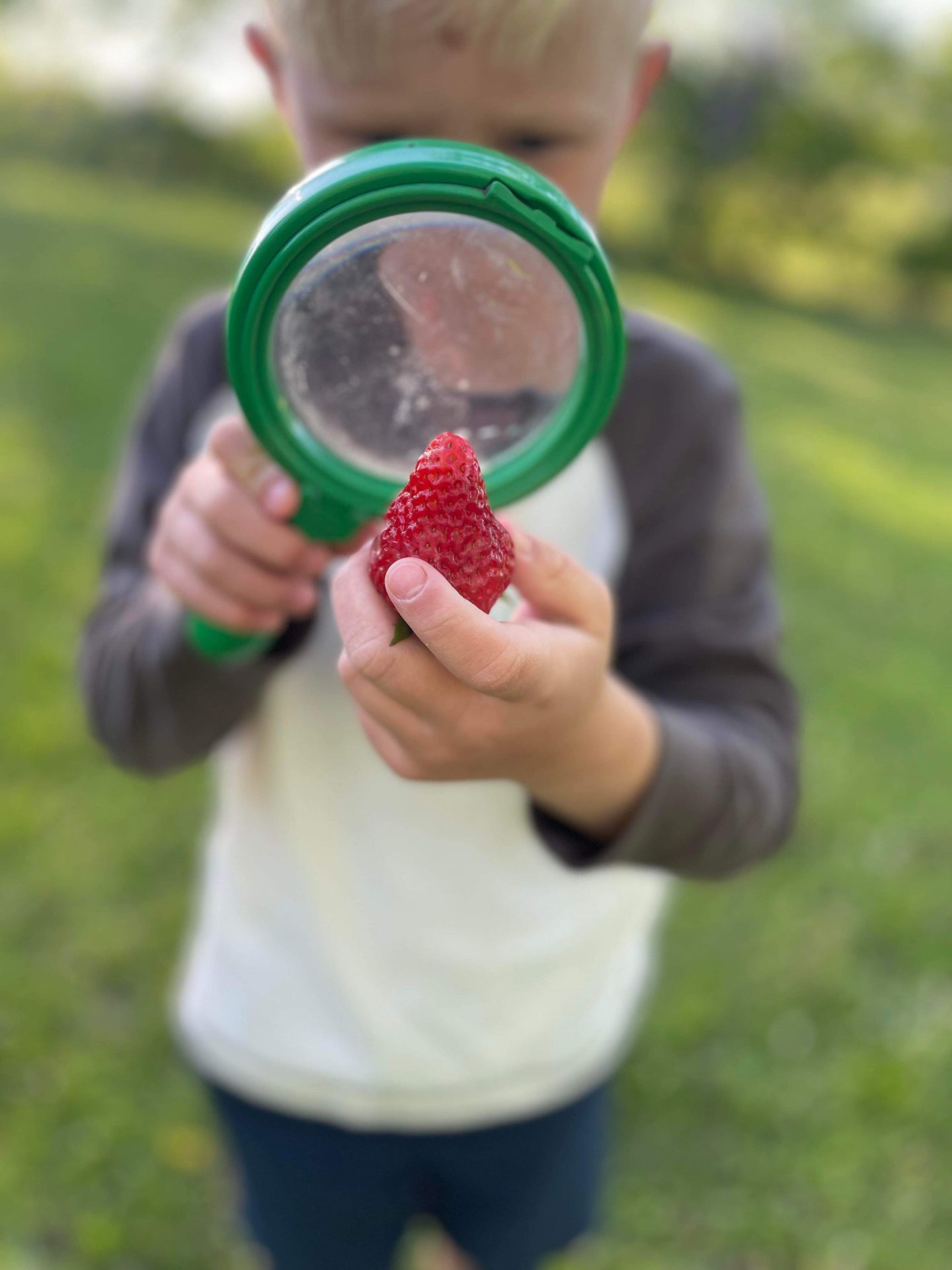Local foods can be the perfect tool to engage the curious minds of kids during the summer! Minnesota Grown asked our friends and colleagues at Minnesota Agriculture in the Classroom to help develop some activities for our followers to do with their families at home.
They came through with two fantastic activities, one for grades K-2 and one for grades 6-8. We hope you enjoy them!
Many Minnesota grown fruits and vegetables hit their peak ripeness in June and July! Can you guess which Minnesota grown food, we’re thinking of from these clues:
- This Minnesota grown food comes from a perennial plant.
- The food is usually red but can also be yellow or white.
- This food has seeds on the outside.
- This food provides vitamin C to our diet.
What is it?
If you said strawberries, you are correct!

Grade Level: K - 2
1. Visit your local farmers market, grocery story of U-pick farm and secure Minnesota Grown berries (strawberries, blueberries, raspberries and any other berry available will work).
2. Use each of your five senses to investigate the berries – this 5 senses chart can be a helpful tool to record ideas, but it is not essential. Just talking through and sharing descriptive words is fun too!
- Look at the berries and ask “What do you see?” If magnifying glasses are available, use them to get an even better look.
- What do the berries smell like?
- What do the berries feel like? Be careful not to crush the berries!
- Take a bite of the berries. What do you hear?
- What do the berries taste like?
3. Take time to share any new discoveries from this berry investigation!
Adapted from Minnesota Agriculture in the Classroom Curriculum Matrix Lesson 374.
Grade level: 6 - 8
Look at the photos below of strawberries. You will notice that strawberries come in a variety of colors, sizes, and shapes. What makes these strawberries different? Genetics and the DNA contained in the cells of the strawberries are to blame! Follow the procedure below to get a close-up look at the DNA that gives strawberries their shape, size, color, and flavor.

Supplies and Materials:
- 2 ripe strawberries
- 1 sealable plastic bag - thicker freezer bags are best
- Clear dish soap
- Salt - table salt (NaCl)
- Water
- Isopropyl alcohol - rubbing alcohol will also work
- Coffee filter - or paper towel
- Clear cups - or test tubes
- Tweezers - or a chop stick or toothpick will work
- Syringe, measuring cups, measuring spoons - whatever you have on hand will work!
- Paper towels - for clean-up
Procedure:
- Place the alcohol in the freezer for at least an hour. You want it cold.
- Create the DNA Extraction Liquid. In a large cup, mix 1/4 cup of water (room temperature) with 1 tablespoon of dish soap and 1 teaspoon of salt. Gently mix (you don’t want to form bubbles).
- Remove the greens from the strawberries and place in a plastic bag and seal it tightly. Then start mashing! You want to mash it up completely until there are no lumps. Use your fingers and palms to mash it.
- Once strawberries are mashed, add 1 ½ tablespoons (20mL) of the extraction liquid you created in step 2, to the bag. Mash it around for one more minute.
- Add a coffee filter to a clean, clear cup. Press it into the cup so the smashed strawberries can be poured in without overflowing.
- Pour the mashed up strawberry mixture into the filter so only the liquid flows into the cup. You can VERY GENTLY lift and squeeze the filter if you need to get a bit more liquid out. Be very careful you don’t rip the filter. You don’t want any solids getting into the glass, only the liquid.
- Pour about a tablespoon of the cold isopropyl alcohol into the cup. Tip the cup so it slides down the side of the glass.
- Watch as the DNA strands separate from the red strawberry liquid!
- Use your tweezers or a chop stick or a toothpick to lift out the DNA so you can examine it. Strawberry DNA will look like a stringy white substance since DNA molecules form long chains. Some say it looks similar to snot!
Congratulations! You have just extracted DNA from strawberries!
Adapted from Minnesota Agriculture in the Classroom DNA: Expression in Agriculture and STEAM Powered Family Strawberry DNA Extraction.

Minnesota Agriculture in the Classroom provides free curriculum, educational resources, grants, outreach and professional development opportunities to increase ag literacy through K-12 education.
Learn More.
